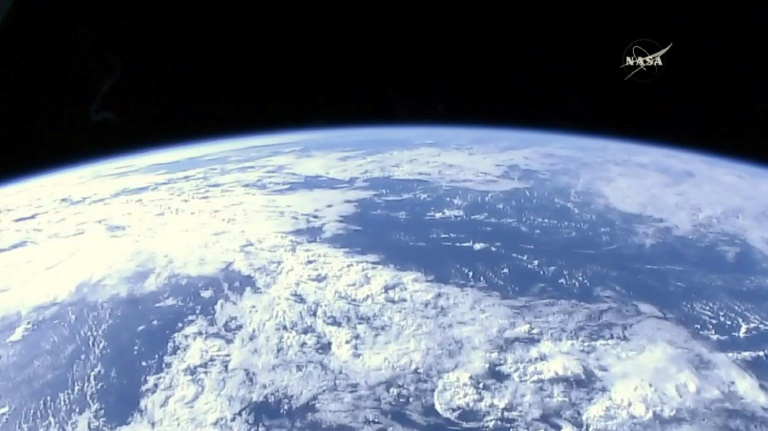
A new study factored in decades of satellite observations which track how much sunlight gets bounced back into space. Image: NASA TV/AFP
The UN’s forecast for global warming is about 15 percent too low, which means end-of-century temperatures could be 0.5 degrees Celsius higher than currently predicted, said a study released Wednesday.
The prediction makes the already daunting challenge of capping global warming at “well under” 2.0 degrees Celsius (3.6 degrees Fahrenheit) — the cornerstone goal of the 196-nation Paris Agreement — all the more difficult, the authors said.
“Our results suggest that achieving any given global temperature stabilization target will require steeper greenhouse gas emissions reductions than previously calculated,” they wrote.
A half-degree increase on the thermometer could translate into devastating consequences.
With only a single degree Celsius of global warming so far, the planet has already seen a crescendo of deadly droughts, heatwaves and superstorms engorged by rising seas.
The United Nations’ Intergovernmental Panel on Climate Change (IPCC), which provides the scientific foundation for global climate policy, projects an increase in the earth’s average surface temperature of about 4.5 Celsius by 2100 if carbon pollution continues unabated.
But there is a very large range of uncertainty — 3.2 to 5.9 degrees Celsius — around that figure, reflecting different assumptions and methods in the dozens of climate models the IPCC takes into account.
“The primary goal of our study was to narrow this range of uncertainty, and to assess whether the upper or lower end is more likely,” lead author Patrick Brown, a researcher at the Carnegie Institution for Science at Stanford University in California, told AFP.
Good science, bad news
By factoring in decades of satellite observations which track how much sunlight gets bounced back into space, the study showed that the more alarming projections are clearly aligned with that data and the warming that has been measured so far.
“Our findings eliminate the lower end of this range,” Brown said.
“The most likely warming is about 0.5 C greater than what the raw model results suggest.”
One scientist not involved in the research described it as a “step-change advance” in the understanding of how hot our planet is likely to become.
“We are now more certain about the future climate,” said William Collins, a professor of meteorology at the University of Reading.
“But the bad news is that it will be warmer than we thought.”
The study, published in the journal Nature, not only narrows the temperature, but reduces the degree of uncertainty as well.
“If emissions follow a commonly used ‘business as usual’ scenario, there is a 93 percent chance that global warming will exceed four degrees Celsius by century’s end,” said co-author Ken Caldeira, also from Stanford.
Up to now, there was barely more than a coin-toss certainty that the earth would breach the 4 C barrier by 2100 under that story line.
But even if one assumes a more optimistic future in which humanity rapidly accelerates the global economy’s transition from “brown” to “green” energy, the findings still apply, the authors cautioned.
“We should expect greater warming than previously calculated for any given emissions scenario,” they wrote in an online comment.
Brown and Caldeira “have checked and corrected all the models, revealing they underestimated potential warming by up to 15 percent” said Mark Maslin, a climatologist at University City London.
“This means international action to keep global temperature below 2 C or even 1.5 C” — an aspirational goal in the Paris Agreement — “will require cutting carbon emissions deeper and faster.” AB
RELATED STORIES:
Satellite images show extent of air pollution worldwide
Sea turtles’ sad fate: from restaurant menus to plastic ‘soup’
Volcanic ‘super-eruptions’ more frequent than thought – study